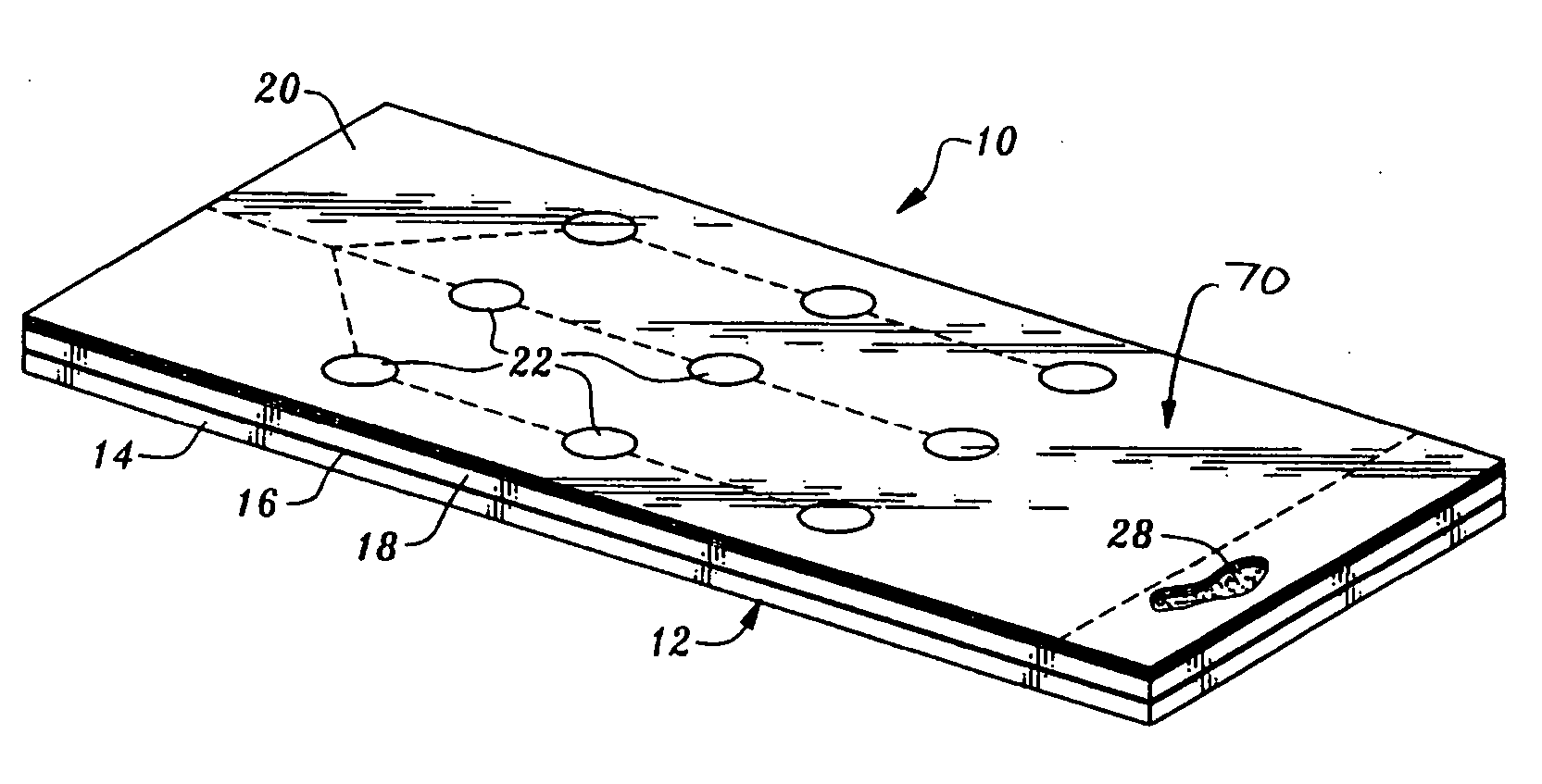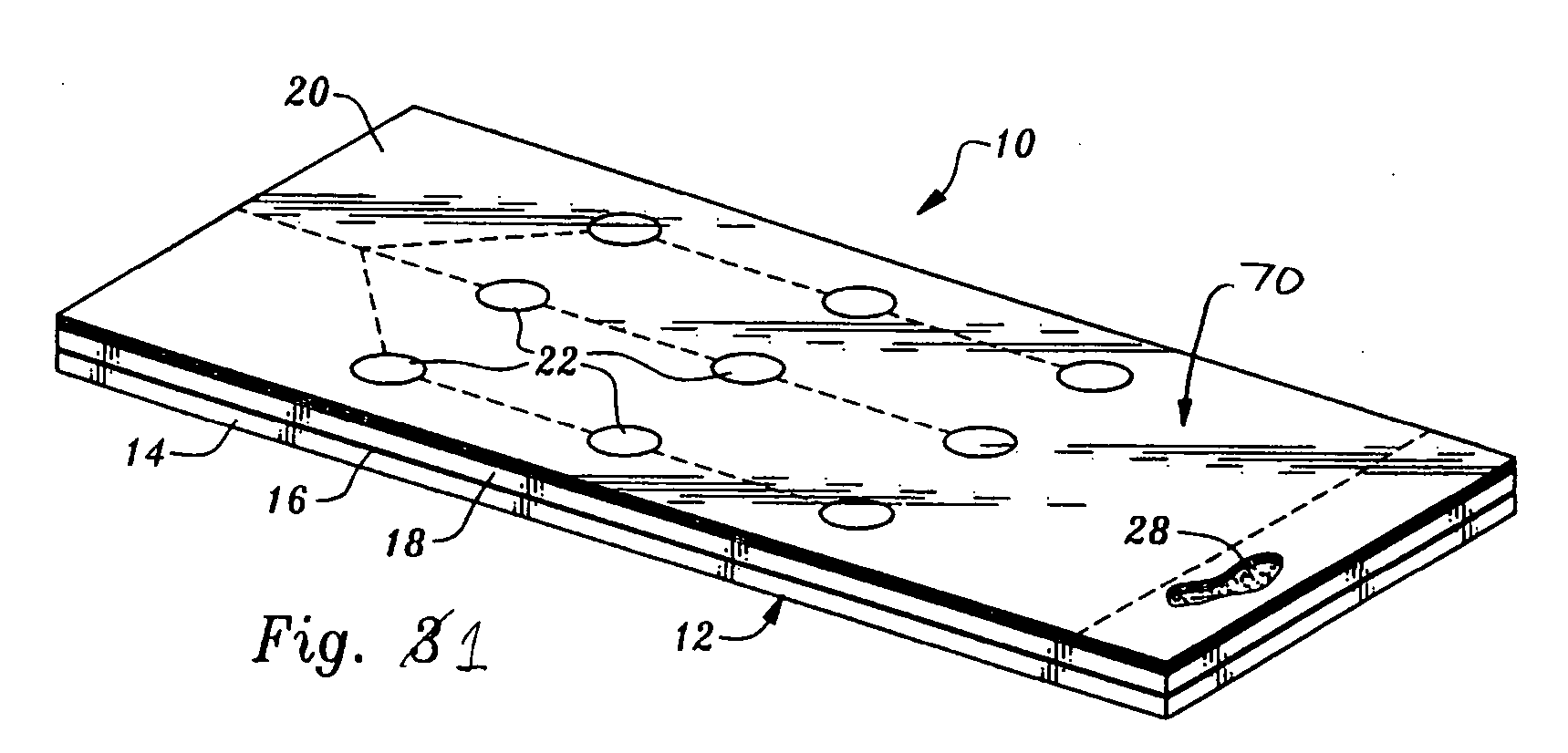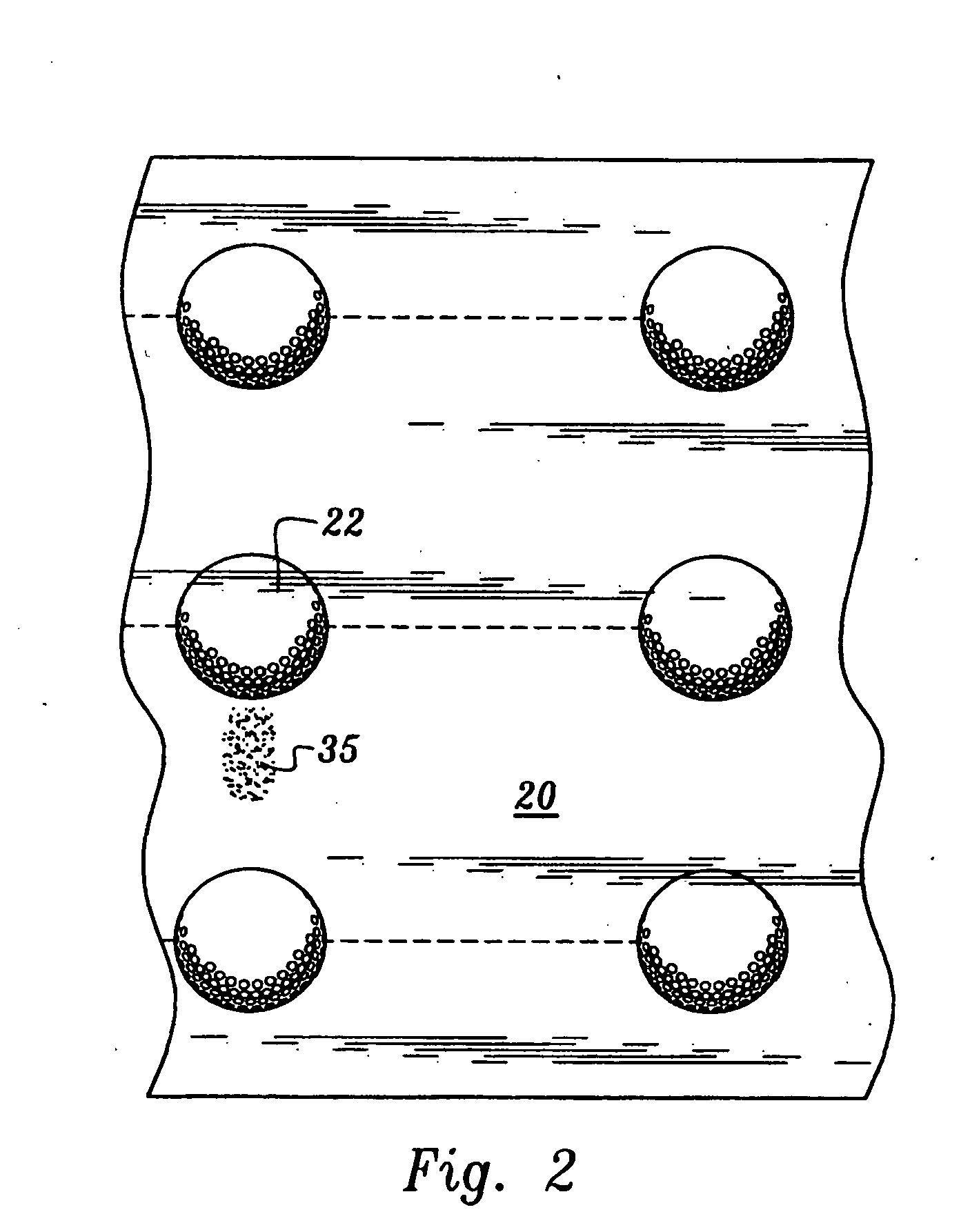Method and apparatus for golf club fitting
a golf club and golf ball technology, applied in the field of golf clubs, can solve the problems of not being particularly convenient for improving golf skills, not being able to give the same type of information about the swing, and prior art devices that recorded the contact area, etc., and achieves the effects of convenient use, low cost, and convenient us
- Summary
- Abstract
- Description
- Claims
- Application Information
AI Technical Summary
Benefits of technology
Problems solved by technology
Method used
Image
Examples
Embodiment Construction
[0028] Two aspects of golf club fitting involve shaft length, the length of the golf club shaft, and lie angle, the angle formed by the sole of the club and the shaft. The shaft length is typically measured from the top of the club grip to the sole of the club head. The shaft length affects distance, accuracy, and the swing plane. The lie angle is the angle as measured between the sole of the club and the shaft axis. The lie angle affects the position of the club head at impact of the club with the ball. Proper lie angle will facilitate the center of the club head striking the ground during a swing of the club, as opposed to the heel or the toe of the club head striking the ground.
[0029] The adjustment of the shaft length and the lie angle are typical adjustments made during the fitting of golf clubs to a user. The shaft length defines the length of the swing arc. When a longer club is used, the golfer must stand further from the ball. When a shorter club is used, the golfer must s...
PUM
 Login to View More
Login to View More Abstract
Description
Claims
Application Information
 Login to View More
Login to View More - R&D
- Intellectual Property
- Life Sciences
- Materials
- Tech Scout
- Unparalleled Data Quality
- Higher Quality Content
- 60% Fewer Hallucinations
Browse by: Latest US Patents, China's latest patents, Technical Efficacy Thesaurus, Application Domain, Technology Topic, Popular Technical Reports.
© 2025 PatSnap. All rights reserved.Legal|Privacy policy|Modern Slavery Act Transparency Statement|Sitemap|About US| Contact US: help@patsnap.com



